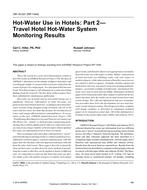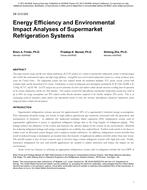Click here to purchase
This paper is about the application of Mixed Methods for design professionals and social science researchers. The purpose is to describe an intellectualcommons which integrates qualitative and quantitative data related to sustainable design and operation of the built environment. Once described, theproposed intellectual commons would include a form of communication based on data described by symbolism and logic to be shared by the broad range ofworldviews in our global society. This form of communication models a common process of problem solving for many academic and professional disciplines:First, choose to draw a diagram. Second, use standard symbols that appeal to a broad spectrum of worldviews. Third, use the symbols and diagrams tosupport the narrative description of the problem and provide for an understanding of results that are measurable, repeatable, and generalizable beyond thecurrent case or data set. Designers of the built environment have made great strides towards efficiency, but we are running out of physics. The next pathtowards sustainability runs through the social sciences, especially as it relates to human behavior. This author’s social constructivist worldview sees hopein the realm of positive psychology as a motivator. Thus it is proposed that engineers meet the social scientists at the entrance to this new intellectualcommons which we can develop together. We should explore qualitatively described opportunities in addition to solving problems with pre-formattedsolutions. If the solution is lower resource consumption per unit area of building we are missing an important qualitative and quantitative product: thepurpose of the building as described in personal narratives and the goals of the owner/occupant. The "information age" has been driven by quantitativedata. The current processor age derives value through the integration of quantitative data and qualitative analysis. This paper describes how that valueis presented in the form of a Mixed Methods Energy Quotient. The ASHRAE bEQ process includes a methodology for convergence. The as-designedand in-operation consumption data are compared. If favorable, that is convergence. If not, that is divergence. This is a variation on a mixed methodsbasic convergent design inclusive of expected imperfection that may be addressed by the commissioning process. After the integration step in the mixedmethods design, different paths are followed in the on-going operations cycles. Convergence in the form of continuous commissioning and high performancebuilding operation. Divergence to be addressed via narrative in the issues and resolutions log.
Citation: 2016 Winter Conference, Orlando, FL, Conference Papers
Product Details
- Published:
- 2016
- Number of Pages:
- 8
- Units of Measure:
- Dual
- File Size:
- 1 file , 2.4 MB
- Product Code(s):
- D-OR-16-C050


